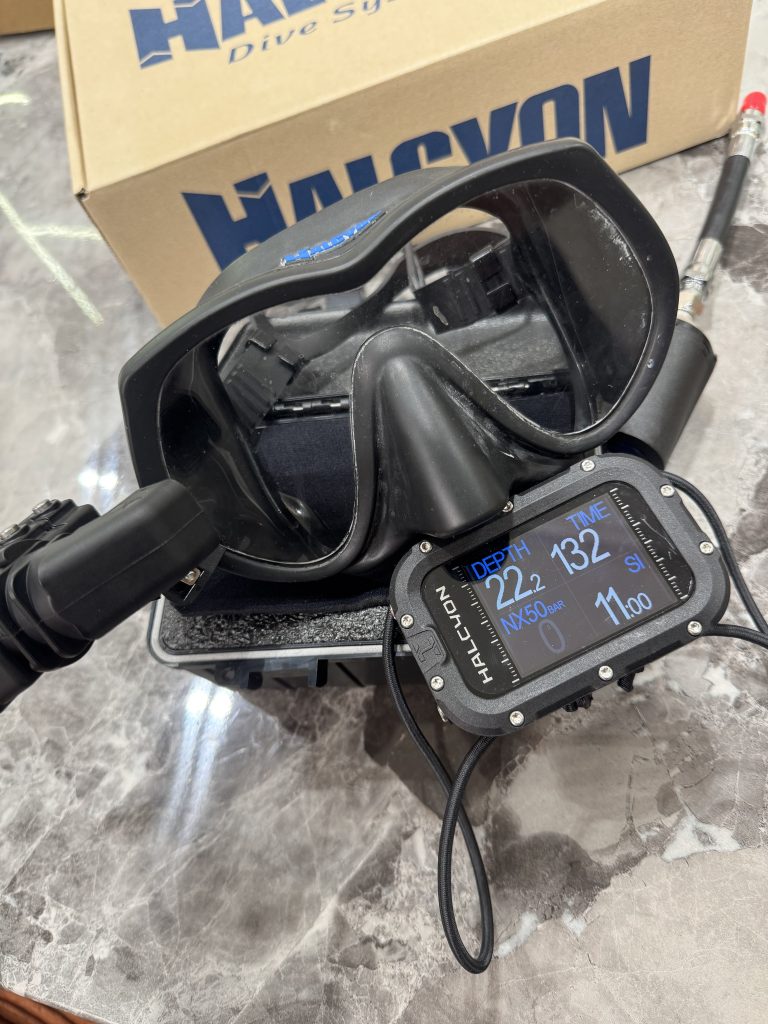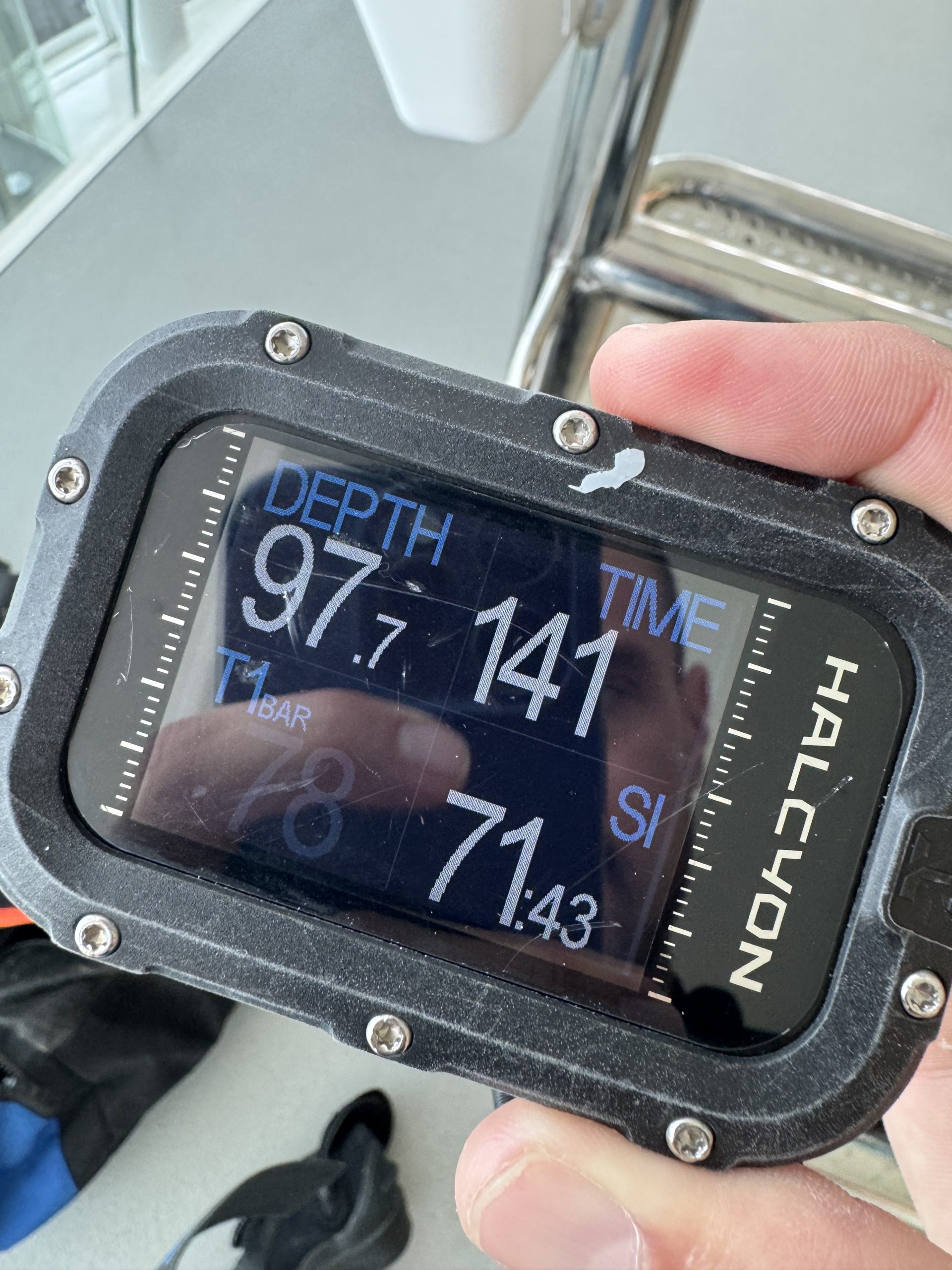In the world of diving, many believe that a more expensive computer automatically gives you a better or safer decompression profile.
That’s not quite true. Most dive computers — from entry-level to high-end technical units — rely on the same core decompression algorithms, such as the Bühlmann ZHL-16C or variants of it.
Some technical models also use the VPM (Varying Permeability Model), a bubble-based algorithm preferred by divers who like slightly deeper initial stops and smoother decompression profiles. You’ll find VPM implemented in computers and software from brands like Dive Rite, Hollis, and earlier Ratio or OSTC units.
What really differs between models isn’t the safety math itself, but the features, interface, and convenience wrapped around it.
Expensive computers might offer extras like air integration, custom gradient factor adjustment, Bluetooth syncing, detailed dive planners, or multi-gas and CCR support, but when it comes to your actual deco profile, the math behind it is usually the same.
Ultimately, what matters most is not how much your computer costs — but how well you understand and use it.
The Algorithm That Runs the Show
Almost every dive computer works on a model that predicts how inert gases (like nitrogen or helium) are absorbed and released by your body during a dive.
The most common is the Bühlmann ZHL-16C algorithm, sometimes with manufacturer-specific “conservatism” or gradient factor tweaks.
So, whether you’re diving with a $500 or a $2000 device, the difference is rarely about “better deco” — it’s about data presentation, configurability, and durability.
Computers I’ve Used and What I Learned
Over time, I’ve used several computers in very different categories — from smartwatches to dedicated technical diving instruments. Each had something unique to offer.
1. Apple Watch Ultra + Oceanic+ App
My first dive computer setup. The Apple Watch Ultra paired with the Oceanic+ app is great for recreational divers — elegant, intuitive, and accurate for no-decompression dives.
It’s perfect for casual diving, but when I started moving toward trimix and technical diving, its limitations became obvious. The system doesn’t support advanced gas mixes or decompression planning, and the algorithm is relatively conservative.
Still, for recreational air and Nitrox dives, it’s a fantastic and user-friendly entry point — especially if you already use an Apple ecosystem.
2. Shearwater Petrel 3
The Shearwater Petrel 3 is built for technical and rebreather diving, and it feels like it. It’s a fully independent unit, robust and reliable, with support for multiple gases, Trimix, and CCR modes.
I love its clarity underwater and the fact that it uses AA batteries, which are easily replaceable anywhere.
Configuration, however, is fully manual — everything is done directly on the device, which means it takes a few minutes longer to set up than computers that sync through a mobile app. Once you get used to it, though, it’s rock-solid and very trustworthy — a favorite in the tech diving community for good reason.
3. Halcyon Symbios (Handset + HUD)
The Halcyon Symbios is an elegant, CCR-ready dive computer system consisting of a handset and a heads-up display (HUD).
It’s intuitive, bright, and beautifully engineered. One of its major advantages is that it’s fully rechargeable — no disposable batteries — and it can be configured easily through the Symbios mobile app, making gas management and settings adjustments quick and intuitive.
Underwater, having the HUD showing key data right in your field of vision is a huge advantage, especially on complex dives. It’s compact, precise, and clearly designed with serious divers in mind.
For recreational divers, it’s more computer than you need, but for CCR or deep trimix it’s a seamless, modern tool that feels one step ahead.
4. Garmin Descent MK3
The Garmin Descent MK3 sits between a smartwatch and a dive computer — and it does both remarkably well.
It uses the Bühlmann ZHL-16C algorithm and supports air, Nitrox, Trimix, and CCR modes. It’s lightweight, beautifully built, and its battery life is exceptional — easily lasting multiple dive days on a single charge.
I mostly used it as a backup computer, and it excelled in that role. However, I never fully adapted to the way information is displayed — the data layout felt a bit busy for my taste, especially compared to the simplicity of Shearwater or Halcyon interfaces.
Key Takeaways
Algorithm ≠ Price: Most modern dive computers run on Bühlmann ZHL-16C or a close variant. Some advanced models offer VPM as an option, but the underlying safety principles remain similar.
Choose for your level: Recreational divers can thrive on entry-level models; technical divers benefit from features like multiple gas support, CCR modes, and customizable gradient factors.
Ease of use matters: A device you can configure quickly and read clearly underwater is far more valuable than one with extra menus you rarely use.
Power source: Rechargeable units like the Halcyon Symbios and Garmin MK3 are convenient and eco-friendly; replaceable-battery models like the Petrel 3 are easier to manage on expeditions.
Comfort first: The best dive computer is the one you understand instinctively — so you can focus on the dive, not the display.
Final Thoughts
Each of these computers taught me something different about diving — and about how technology fits into exploration.
The Apple Watch Ultra was my gateway, the Petrel 3 my technical workhorse, the Halcyon Symbios my precision tool, and the Garmin MK3 my reliable backup.
They all share one thing in common: they don’t dive for you — they just help you make smarter, safer decisions underwater.
In the end, it’s not about what you wear on your wrist — it’s about what you understand in your head.

Dive Computer Comparison Overview
| Model | Algorithm | Gases Supported | Configuration | Battery Type | Key Strengths | Ideal For |
|---|---|---|---|---|---|---|
| Apple Watch Ultra + Oceanic+ | DSAT-based (Oceanic proprietary) | Air, Nitrox (up to 40%) | Via iPhone app | Rechargeable | Beautiful interface, simple for beginners | Recreational divers |
| Shearwater Petrel 3 | Bühlmann ZHL-16C | Air, Nitrox, Trimix, CCR | On-device (independent) | Replaceable AA | Robust, deep-rated, trusted algorithm | Technical / CCR divers |
| Halcyon Symbios (Handset + HUD) | Bühlmann ZHL-16C | Air, Nitrox, Trimix, CCR | Via Symbios mobile app | Rechargeable | Dual display (HUD + handset), easy app setup | Technical / CCR divers |
| Garmin Descent MK3 | Bühlmann ZHL-16C | Air, Nitrox, Trimix, CCR | On-device + Garmin Connect app | Rechargeable | Exceptional battery life, smartwatch functionality | Recreational to advanced divers |



